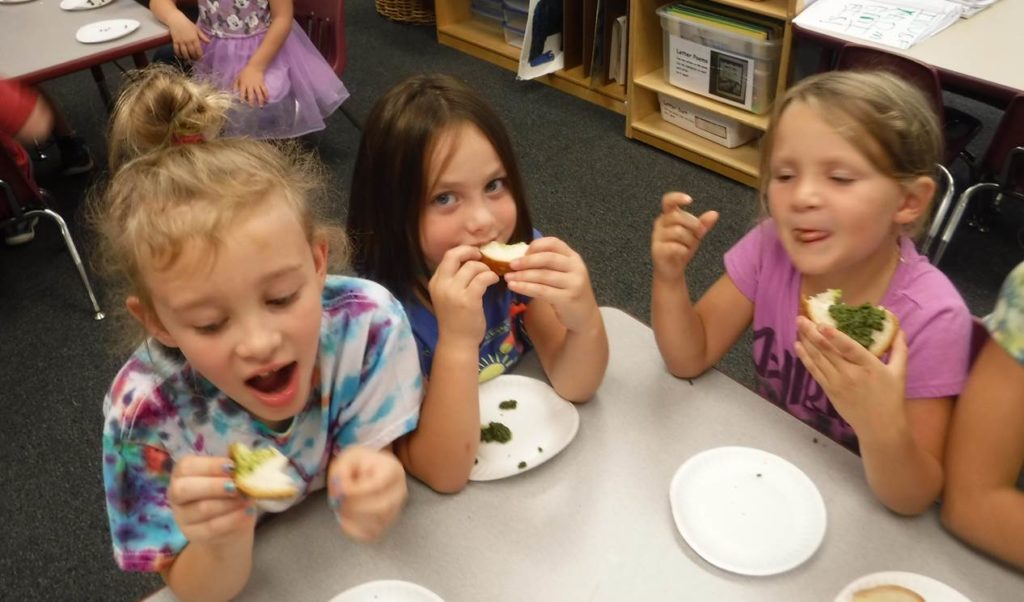Kristin Joivell Juniata Valley Elementary School
Crop Production Study
April 2017 to October 2017
In this study from April 2017 to October 2017, students conducted a crop production study using basil plants. During this study, students from two different school years collaborated to grow, harvest, and process the basil while keeping data about the growth of the plants.
The first step in the crop production study was planting the basil seeds. Our class received a Donors Choose grant for an indoor garden with lighting for growing plants. In April, the students planted the basil seeds to grow in our indoor garden.
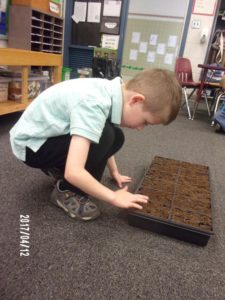
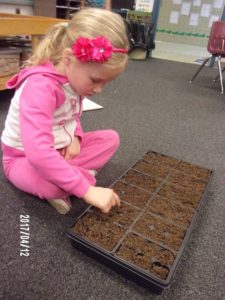
Throughout the months of April and May, the students cared for the basil plants in the indoor garden. The next four photographs show the progression of the basil plants as they grew.
Here are the basil plants on April 12:
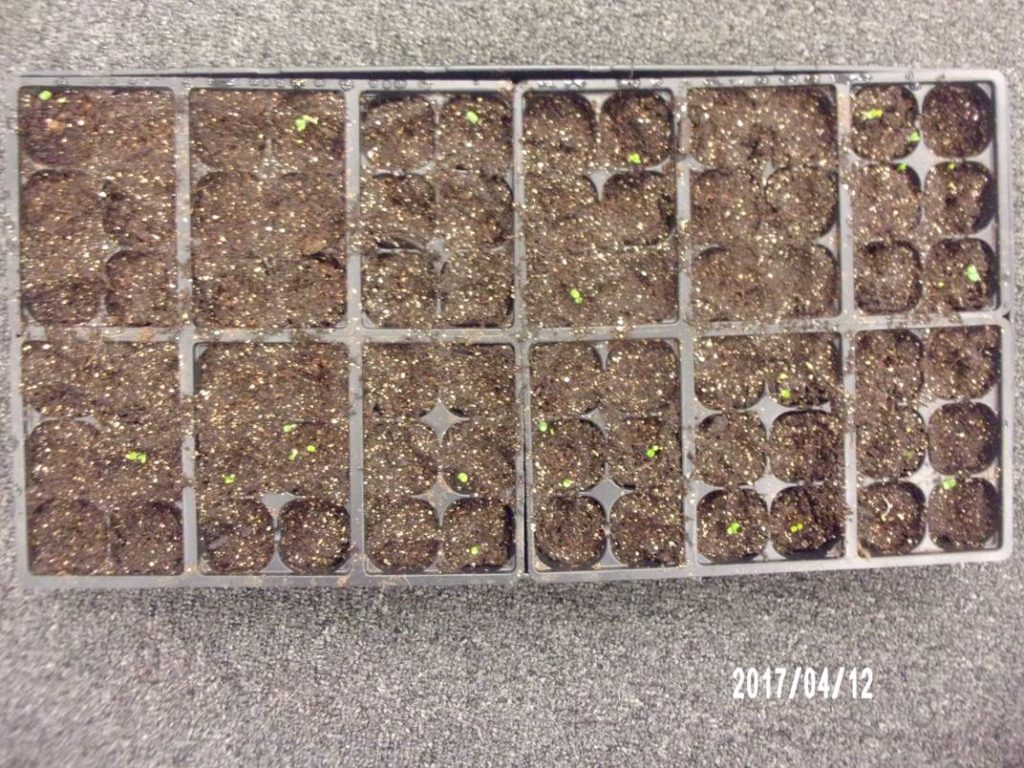
Here are the basil plants on April 17:
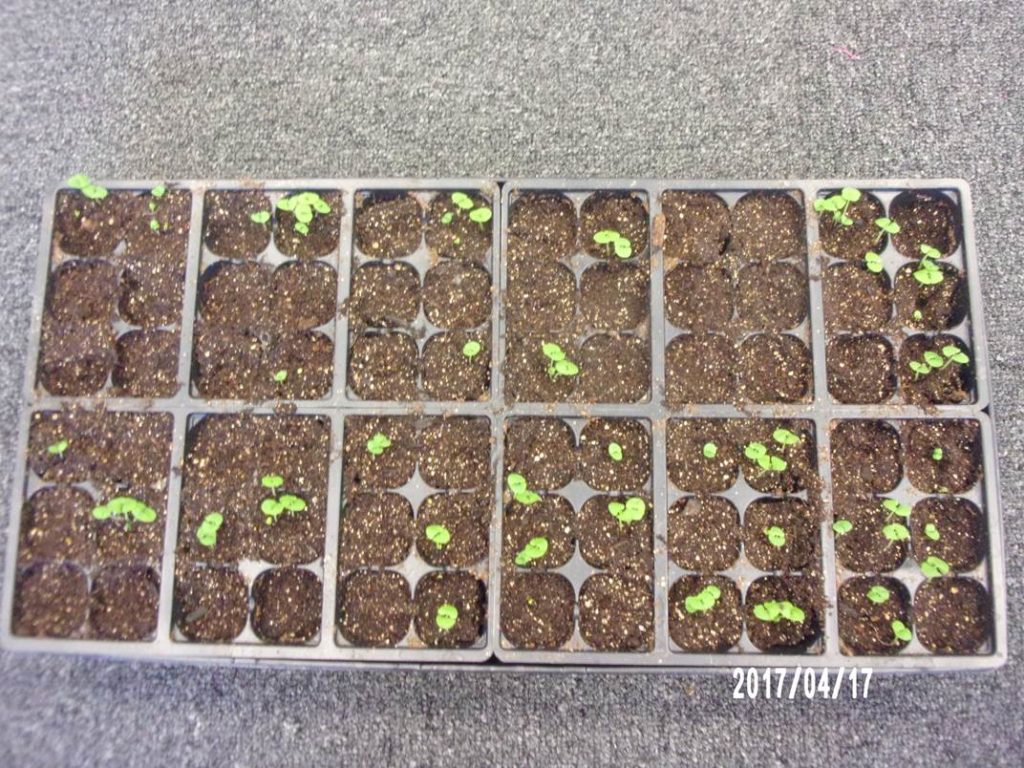
Here are the basil plants on April 27:
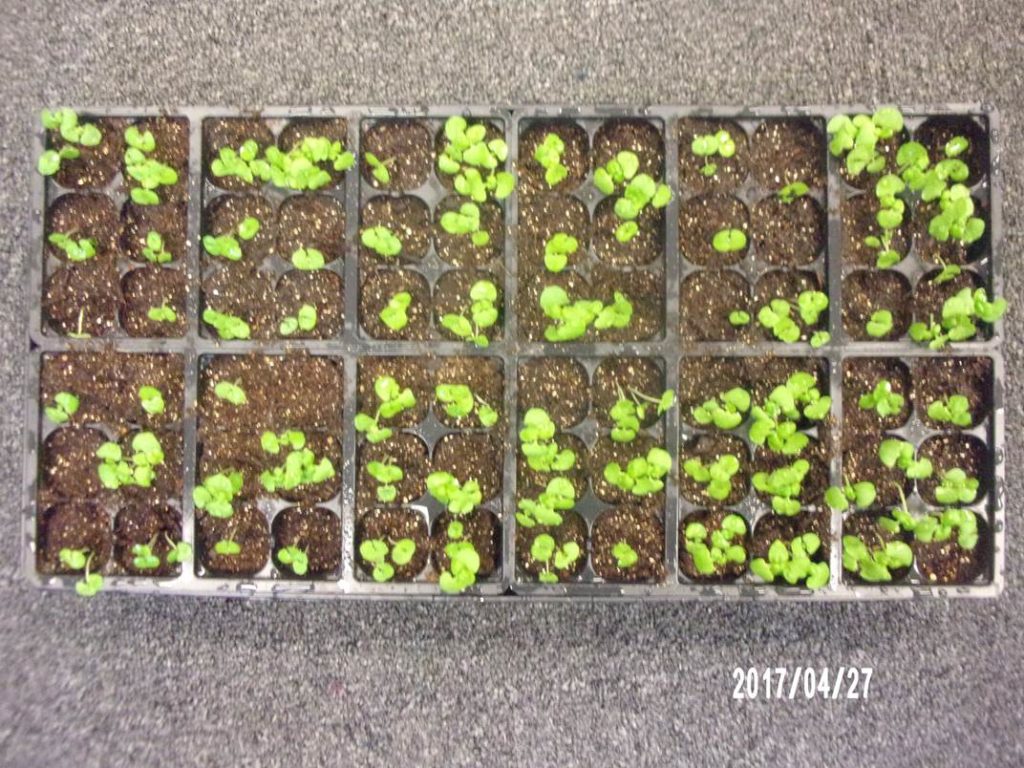
Here are the basil plants on May 23:
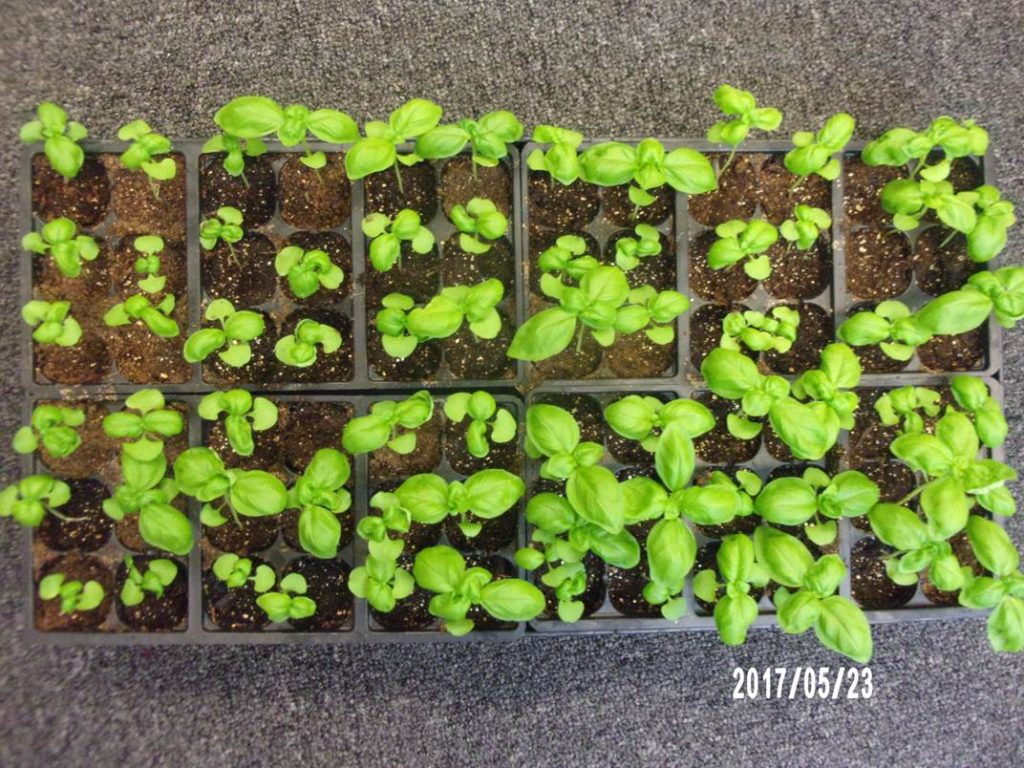
As the basil seeds grew, students recorded their observations in garden journals. As you can see, students were noticing the changes in the leaves and sizes of the basil plants.
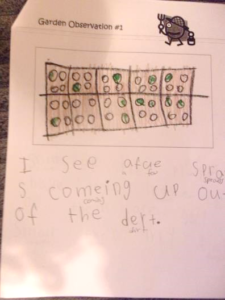
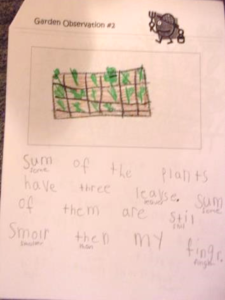
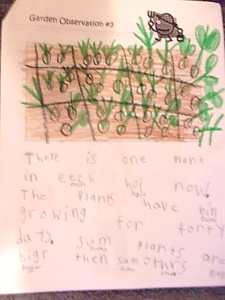
The next step was to transplant the basil plants into the two plots in the outdoor garden–the warmed Open Top Chamber Plot and the unwarmed Fenced Plot. At the end May, there were 72 basil plants transplanted into each plot. The students continued to care for the basil plants in the outdoor garden as the school year concluded.
The basil plants continued to develop throughout the summer months. In the following sets of photographs, the warmed Open Top Chamber Plot is shown first and the unwarmed Fenced Plot is shown second.
Here are the basil plants on June 1:
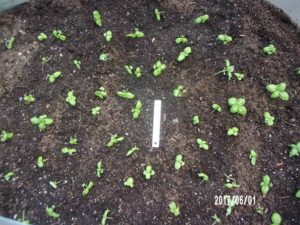
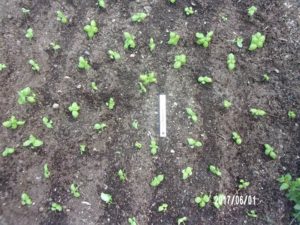
Here are the basil plants on July 3:
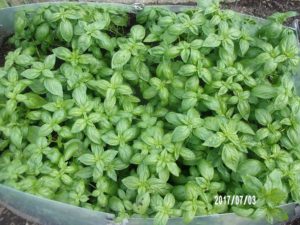
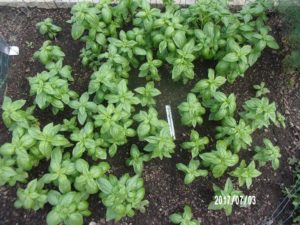
Here are the basil plants on July 18:
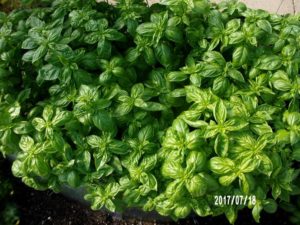
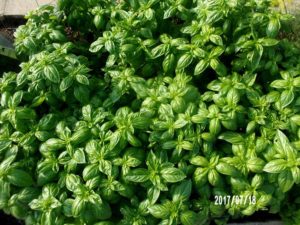
Here are the basil plants on August 1:
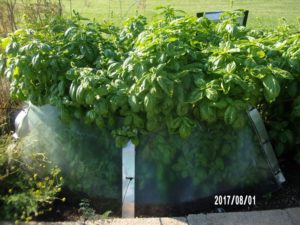
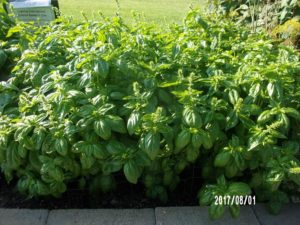
Here are the basil plants on August 23:
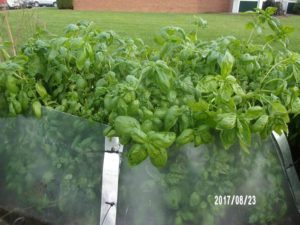
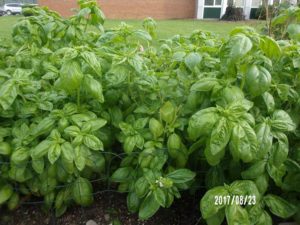
Throughout the summer, I harvested the basil plants that had reached the blooming phenophase for processing.

When the new school year began in August, I taught the new kindergarten students how to identify the blooming phenophase in basil plants, so that they could help with the harvest.
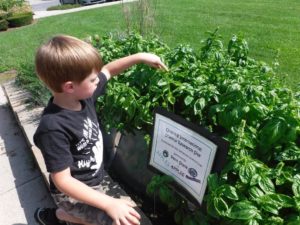
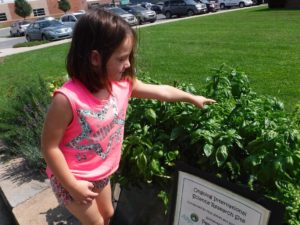
Then, the students helped to harvest the basil plants and process them. We harvested the basil plants, pulled off the leaves, and discarded the stems.
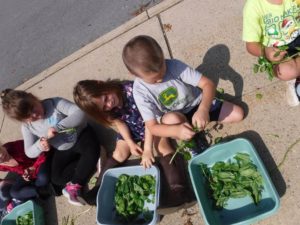
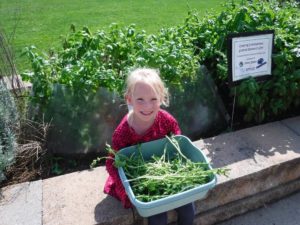
Next, we weighed the harvested leaves before processing them into pesto.
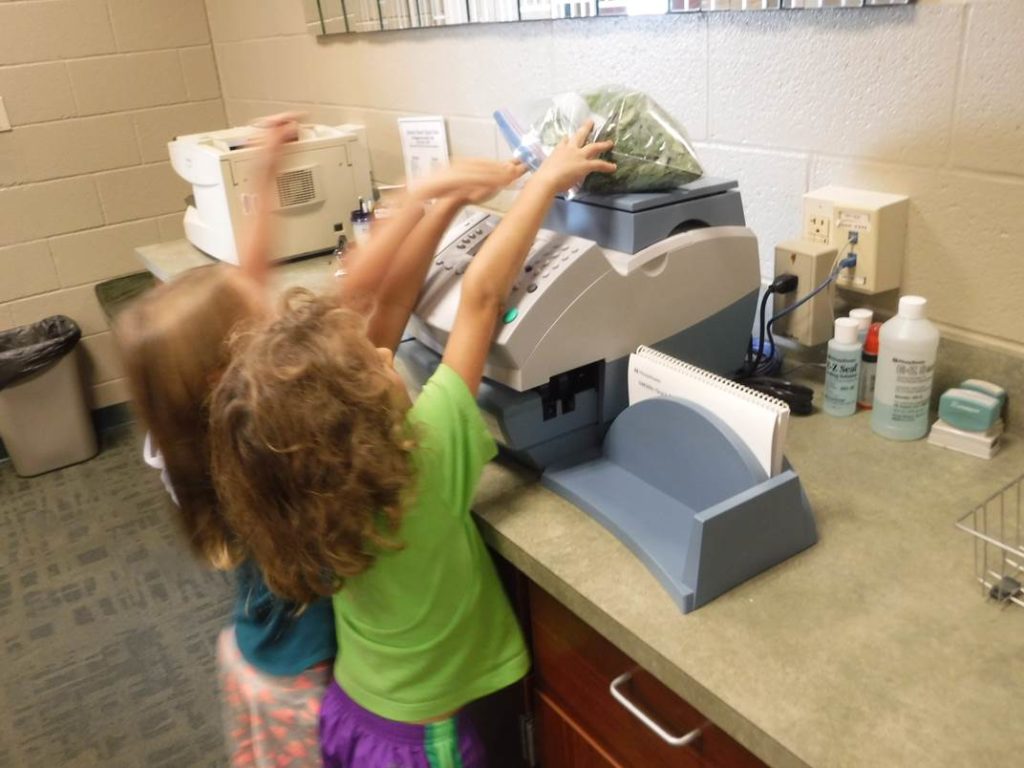
Finally, students from both school years came together for a final discussion about the results of the study and to share a snack from the harvest together. At the gathering, the students viewed photographs of the plants during the entire study, made inferences about differences in growth in the warmed Open Top Chamber Plot and the unwarmed Fenced Plot, and enjoyed sampling pesto created from the basil plants that they had worked together to grow. Additionally, the pesto from the basil leaves was served at a variety of whole school events during the 2017-2018 school year including Open House, Family Reading Night, and Family Science Night.
